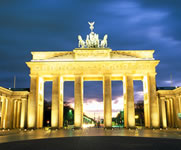
The eastern section of Sisi's Road from the Wittelsbacher Land region in Bavaria to Budapest is 800 kilometres long and connects the places that played a special role in the life of Elisabeth, the empress of Austria and later queen of Hungary. The second section of about 500km runs south from Augsburg via Füssen, into Italy taking in Trauttmansdorff Castle, notable for its gardens, and Levico Terme on its way to Miramar Castle near Trieste. Elisabeth Amalie-Eugenie - known affectionately as Sisi - was born in Munich on Christmas Eve 1837. She was the fourth child of Maximillian, Duke in Bavaria and Duchess Ludovika, one of the daughters of King Maximillian I of Bavaria. Sisi spent a happy childhood in Bavaria. Her father, Max, Duke in Bavaria, was an enthusiastic rider, marksman and hunter and for this reason he spent the summer months in the countryside, from 1838 at the palace in Unterwittelsbach, now part of Aichach, about 30km from Augsburg. The special feature of this moated palace, parts of which date back almost a thousand years, is its proximity to the ruins of the Wittelsbach ancestral castle in Oberwittelsbach. In 1834, a Bavarian national monument to the cradle of the Wittelsbach dynasty was erected in front of the Church of Atonement here. Sisi's father owned huge hunting grounds around his summer residence, where today there is a network of "Sisi Tour" walking and cycling trails.

Sisi's Road also passes nearby Kühbach Palace, which was also owned by Duke Max. Visitors are made welcome at the local brewery, where they can even sip a "Sisi spritzer" in its typically Bavarian beer garden. However, Sisi's life changed forever at Bad Ischl in Austria where, just 15 years old, she met the 23-year old Emperor Franz Joseph of Austria in August 1853. (Sisi was still only fifteen at the time of their engagement, as her sixteenth birthday was not until 24 December 1853.) Franz Joseph had been intended to propose to Sisi's sister Helene, who had been brought up expecting to be the empress, but in fact he became engaged to Sisi. Both of them felt particularly at home in the splendidly decorated royal palace in Bad Ischl, which they later received as a gift from the emperor's mother, Archduchess Sophie. From that time onwards Bad Ischl became known as the home of the Austrian monarchy. On 22 April 1854, Elisabeth travelled down the Danube to her new home and was welcomed to Nussdorf near Vienna by Emperor Franz Joseph, her husband-to-be. Two days later, the emperor and his Sisi walked up the aisle of the Augustinian Church in Vienna. The couple spent their wedding night at Schönbrunn Palace and this baroque palace, built during the time of Empress Theresa, experienced a revival during the imperial couple's reign when it was used for numerous royal celebrations. Sisi often stayed there in the 1860s, when she increasingly withdrew from court life following the birth of her children.








